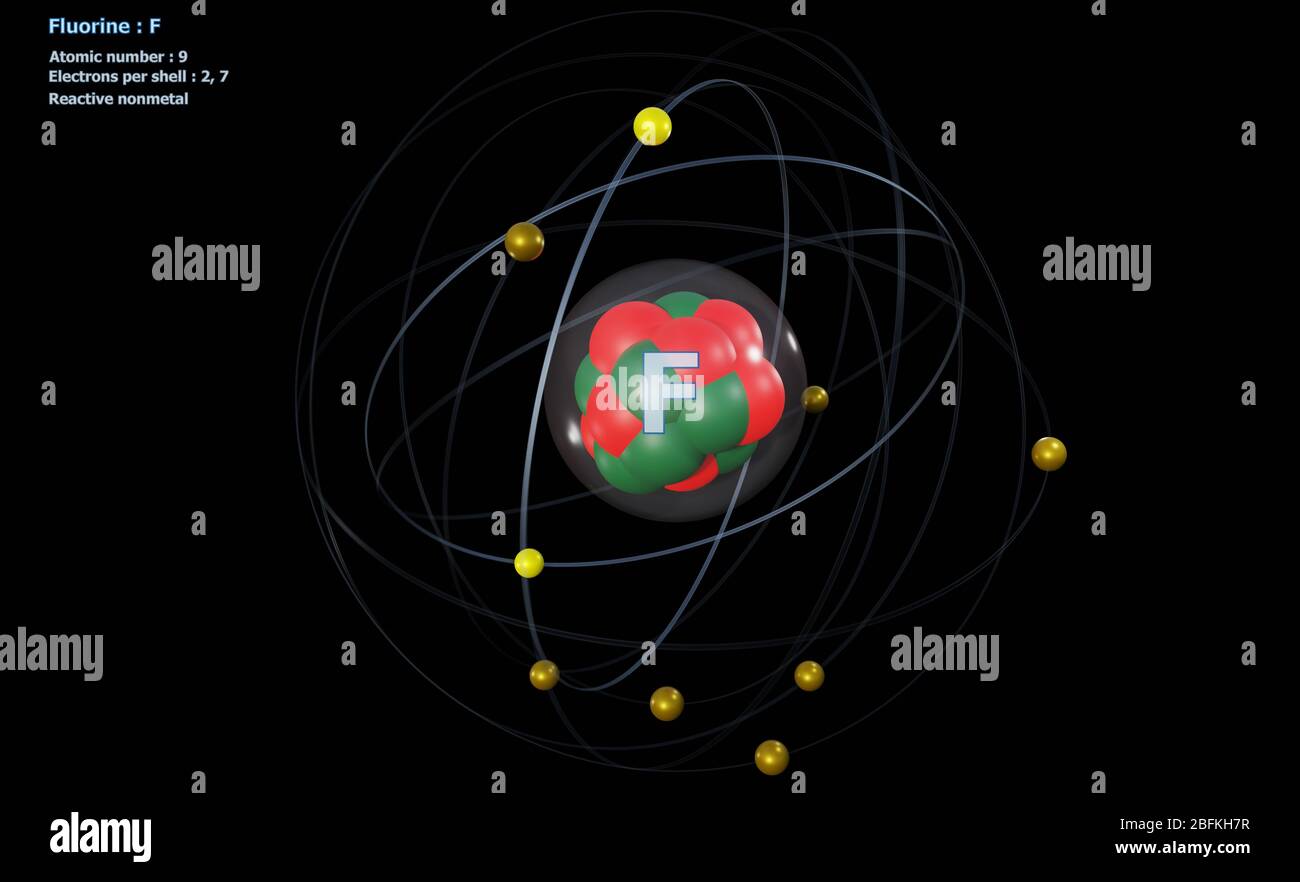A very electronegative atom such as a N, O, or F atom and another very electronegative atom. Hydrogen bond strengths range from 4 kJ to 50 kJ per mole of hydrogen bonds. In molecules containing N-H, O-H or F-H bonds, the large difference in. Atom bomb projects and nuclear energy applications made it necessary to produce large quantities of fluorine since isotopes of uranium can be separated through the gas diffusion of UF 6. Reasonably safe handling techniques for fluorine are now available and one can transport liquid fluorine by the ton.

MELTING POINT: −223°C
BOILING POINT: −188°C
DENSITY: 1.696 g/cm 3
MOST COMMON IONS: F −
Fluorine is a chemical element that in pure form occurs as a dimer of two fluorine atoms, F 2 . The fluorine atom has the ground state electron configuration 1s 2 2s 2 2p 5 . There is only one stable, naturally occurring isotope of fluorine: 19 F. However, the radioactive isotopes 17 F, 18 F, and 20 F are known. The inclusion of the isotope 18 F (half-life 110 minutes) in bioorganic molecules is an important noninvasive technique used in the study of living tissue by positron emission tomography.
Fluorine is the most electronegative element. It is the lightest and most reactive element in the halogen family. Fluorine is a poisonous, corrosive, pale yellow gas with an acrid odor. It is the most powerful oxidizing agent known. The low F–F bond energy and the high energy of bonds between fluorine and other elements combine to make reactions of fluorine exothermic.
Elemental fluorine was first prepared by Henri Moissan in France in 1886 via the electrolysis of anhydrous hydrogen fluoride in the presence of potassium fluoride. Fluorine forms compounds with all of the elements except helium, neon, and argon. In nature, fluorine is primarily found in the minerals fluorospar (CaF 2 ), cryolite (Na 3 AlF 6 ), and fluoroapatite (CaF 2 ·3Ca 3 (PO 4 ) 2 ), together comprising 0.065 percent of Earth's crust (making fluorine the thirteenth most abundant element). These minerals are widely used as electrolytes in the preparation of aluminum, as fluxes in the metallurgy of iron, and as additives in ceramics.
Fluorine Atom
Other important inorganic compounds of fluorine include uranium hexafluoride, UF 6 , a volatile substance that was used to separate 238 U from the fissionable 235 U by gaseous diffusion in the Manhattan Project . Sodium fluoride, NaF, is often added to drinking water and to toothpaste in order to reduce the incidence of tooth decay.
When hydrogen is replaced by fluorine in organic compounds, the properties of the compounds are substantially altered. The new compounds have increased chemical, thermal, and oxidative stability. Low molecular weight chlorofluorocarbons , known as Freons, are nonflammable, dense, nontoxic compounds particularly useful as refrigerants and blowing agents. Substitutes for these ozone-depleting compounds are being developed.
Teflon (polytetrafluoroethylene) is a chemically inert polymer used to create nonstick frying pans. Polytetrafluoroethylene can be modified to form a coating, Gore-Tex, which allows the passage of water vapor, but not liquid water, and is used in many articles of clothing. Polymeric perfluorinated ethers are widely used as high performance oils and lubricants.
Information About Fluorine
The introduction of one to three fluorine atoms to large organic molecules, such as steroids, has been shown to modify the biological activity of these molecules. Many of these fluorine-containing compounds that are useful as pharmaceutical agents have been prepared. The compound 5-fluorouracil is a widely used anticancer agent. Prozac (containing fluorine) is a well-known antidepressant drug. In addition, agrochemists have developed many herbicides (e.g., trifluralin), insecticides (e.g., diflubenzuron), and fungicides (e.g., flutriafol) that incorporate fluorine. Fluorinated dyestuffs and fluorinated liquid crystals have also found commercial use.
Facts About Atoms For Kids
SEE ALSO Atmospheric Chemistry ; Halogens ; Ozone .

Suzanne T. Purrington
Bibliography

F Atomic Radius
Banks, R. E.; Smart, Bruce E.; and Tatlow, J. C. (1994). Organofluorine Chemistry: Principles and Commercial Applications. New York: Plenum Press.
Gould, Edwin S. (1955). Inorganic Reactions and Structure. New York: Henry Holt.
CHEBI:36939 - fluorine-18 atom
| Main | ChEBI Ontology | Automatic Xrefs | Reactions | Pathways | Models |
F Atom
| |||||||||||||||||||||||||||||||||||||||||||||||||||||||||
